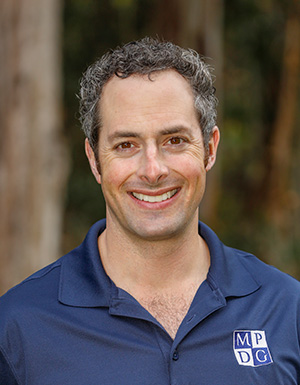
Getting dental implants to replace missing or damaged teeth can be a long process from start to finish. Patients who may benefit from the procedure will often ask common questions such as what to expect after getting dental implants and what the recovery time and post-operative care will be like. We’ll answer that in this blog, along with explaining the procedures that make up dental implant surgery.
The process of placing dental implants has several steps, with their own recovery times and precautions to take along the way. Each patient’s surgery can be different, depending on the health of your teeth and jawbone, and on how many implants are needed. Your AAID-credentialed implant dentist will talk with you about the specifics of your care and explain what the best approach is for you as a patient. In some cases, some of these steps may be able to be combined, shortening the total surgery and recovery time.
Getting Ready for Dental Implants
For some patients, dental implant surgery begins with removing the damaged tooth. This is a common dental procedure, but can take a few weeks to recover from before moving forward. It’s crucial to follow your dentist’s post-extraction instructions carefully to prevent complications like dry socket or infection.
For others, it might begin with bone grafting or bone regeneration procedures to strengthen the jawbone. A strong, stable bone in the area of the implant is necessary to support the force of biting and chewing with the eventual replacement tooth. These procedures rely on bone healing, so it can take eight weeks to several months for full recovery.
Dental Implant Surgery
Once you’re ready for dental implant placement, the longest part of the process begins. Your oral surgeon will make a small cut in your gums to reach the jawbone, then drill a hole and place a titanium implant in it, to stand in for the missing tooth roots. This is done under anesthesia or sedation, so you shouldn’t drive afterward, and should plan to rest for the remainder of the day after your surgery.
The recovery time from this part of the procedure can take several months. As the process of bone healing goes on, the implant will fuse with the healing bone around it and essentially become part of your jaw. Titanium is used as the material for dental implants specifically because of its ability to permanently bond with bone tissue. This means much less noise and slippage compared to dentures, and also improves on the stability and lifetime of the restoration work compared to fixed bridges.
If your missing tooth is in the front of your mouth, you may have a temporary replacement tooth placed during this healing process, for appearances. This is a kind of partial temporary denture, and can be removed for cleaning and at night.
Final Steps
After the dental implant has healed, there’s often one more surgical step — placing a small attachment, called an abutment or collar, on the top of the implant. This provides a base for the crown or replacement tooth to attach when it’s ready. The abutment usually requires local anesthesia.
For some patients, the abutment might be attached during the original implant procedure, but that means the abutment will be visible above the gumline throughout the long healing time. Many patients don’t like how that looks, so it’s placed later on instead. Either way, the abutment attaches to the metal post of the implant, and the gum tissue is closed around it. This requires about two weeks of healing for your gums before the final replacement tooth or teeth can be placed.
After that, impressions will be taken for the creation of your new artificial tooth. These new teeth may be either removable or fixed; your dentist will consult with you about what’s best for your case.
Finally, your new crowns or replacement teeth will be attached to the abutments and you’ll be ready to face the world with a new smile. It may take some time to adjust to the replacement tooth, so follow your dentist’s aftercare instructions closely to ensure everything goes well.
Expected Side Effects
As with any dental surgery, you may have some discomfort during healing from one or all stages of the implant process. Side effects that are normal and expected include swelling around the gums and in your face, slight bruising, pain at the implant site, and minor bleeding. It’s usually recommended to avoid eating hard foods during healing, and your oral surgeon may prescribe pain medication or antibiotics after surgery to help you heal.
If at any time during the healing periods you find that these issues get worse or are causing too much pain, contact your AAID-credentialed implant dentist right away to make sure the problems don’t persist.
Caring for Your Implants
There are things you can do to increase the success rate of dental implants. The failure rate is very low, but there is a significant correlation between smoking and tobacco use and dental implant failure. If you smoke, quit before having this procedure for the best chance at success. If the implant does fail, it has to be removed, and the surgery can be tried again after a few months.
You also can take steps to care well for your teeth and implants after surgery. Keep your teeth, gums and dental work clean by regularly brushing and flossing. There are interdental brushes that can help you clean around and between dental implants and your teeth for a deeper cleaning.
You also should check in with your dentist regularly to maintain the health of your teeth and implants. And, of course, avoid activities that can crack or damage your teeth or implants, like opening bottles with your teeth, chewing on hard candy or ice, or grinding your teeth at night. If the last is a problem for you, talk with your AAID-credentialed implant dentist for possible treatments, like a night guard.
The best guideline to follow post-implants is to communicate any problems right away to your dentist, and don’t hesitate to call if you have any concerns or questions about recovery and post-op care.
This article was written by Ryan Lehr, DDS, AFAAID of Monterey Peninsula Dental Group.
Dr. Ryan Lehr, DDS, AFAAID received his degree from Creighton University School of Dentistry. Dr. Lehr has clinical experience in diagnosis and treatment planning, preventative care, as well as restorative and prosthodontic dentistry. Dr. Lehr believes the responsibility of a dentist is to educate and guide patients so they can make their own decisions on oral health care. When recommending treatment options, Dr. Lehr explains the how and why, ensuring each patient gains a comprehensive understanding of his or her dental health needs. In all aspects of patient care, Dr. Lehr is attentive to detail: he has an innate sense of aesthetics and artistry that he brings to each procedure. A Monterey native, Dr. Lehr completed B.S. in Finance at Santa Clara University before heading to work on the trading floors in New York City and in private banking in San Francisco. Dr. Lehr then decided to pursue his lifelong dream of becoming a dentist. Dr. Lehr enjoys furthering his education in dentistry and considers himself a lifelong student of the profession.
![]() What are those letters after the dentist’s name? Find out what they mean.
What are those letters after the dentist’s name? Find out what they mean.





